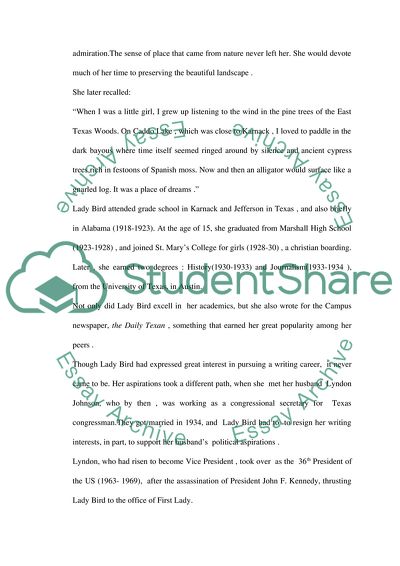Cite this document
(How Former First Lady Claudia Johnson Contributed to Environmental Assignment, n.d.)
How Former First Lady Claudia Johnson Contributed to Environmental Assignment. https://studentshare.org/environmental-studies/1822262-how-former-first-lady-claudia-lady-bird-johnson-contributed-to-environmental-preservation
How Former First Lady Claudia Johnson Contributed to Environmental Assignment. https://studentshare.org/environmental-studies/1822262-how-former-first-lady-claudia-lady-bird-johnson-contributed-to-environmental-preservation
(How Former First Lady Claudia Johnson Contributed to Environmental Assignment)
How Former First Lady Claudia Johnson Contributed to Environmental Assignment. https://studentshare.org/environmental-studies/1822262-how-former-first-lady-claudia-lady-bird-johnson-contributed-to-environmental-preservation.
How Former First Lady Claudia Johnson Contributed to Environmental Assignment. https://studentshare.org/environmental-studies/1822262-how-former-first-lady-claudia-lady-bird-johnson-contributed-to-environmental-preservation.
“How Former First Lady Claudia Johnson Contributed to Environmental Assignment”. https://studentshare.org/environmental-studies/1822262-how-former-first-lady-claudia-lady-bird-johnson-contributed-to-environmental-preservation.


